The First Region One Birding Caravan was launched by the Department of Tourism – Region 1, in partnership with the Department of Environment and Natural Resources (DENR), Northwestern University, and various Local Government Units (LGUs). Wild Bird Photographers of the Philippines (WBPP) and Wild Bird Club of the Philippines (WBCP) members Djop Tabaranza, Vinz Pascua, and Karl James Gavero recount their experience of the 6-day caravan. Djop and Vinz also represented Bird Finder Philippines (BFP) and Birds in Focus (BIF) in the event.
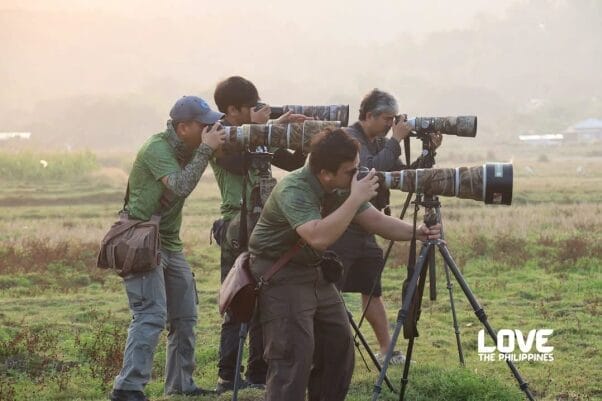
PANGASINAN LEG
By Djop Tabaranza
Spanning six days and covering all four provinces of the region, the First Region One Birding Caravan officially launched on April 4 at the Manleluag Spring Protected Landscape (MSPL) in town of Mangatarem, Pangasinan.
Returning to MSPL was a nostalgic experience for me. I last visited over 15 years ago in the mid-2000s, during a biodiversity survey with a group of researchers. One vivid memory that stayed with me was the melodic call of White-browed Shamas echoing from behind the park office building where we had set up our base camp.

The opening program welcomed participants with a registration ceremony and an orientation that emphasized the role of birdwatching in promoting environmental awareness. The event gathered beginner, and veteran birdwatcher alike, biodiversity experts, wildlife photographers, and nature enthusiasts from organizations such as the Wild Bird Photographers of the Philippines (WBPP), Birds in Focus (BIF), Bird Finder Philippines (BFP), Wild Bird Club of the Philippines (WBCP) and the Birds of ILocos Listing and Inventory Team (BILLIT). Adding youthful energy to the activity were students from schools in and around Mangatarem, who joined efforts to document local bird biodiversity.
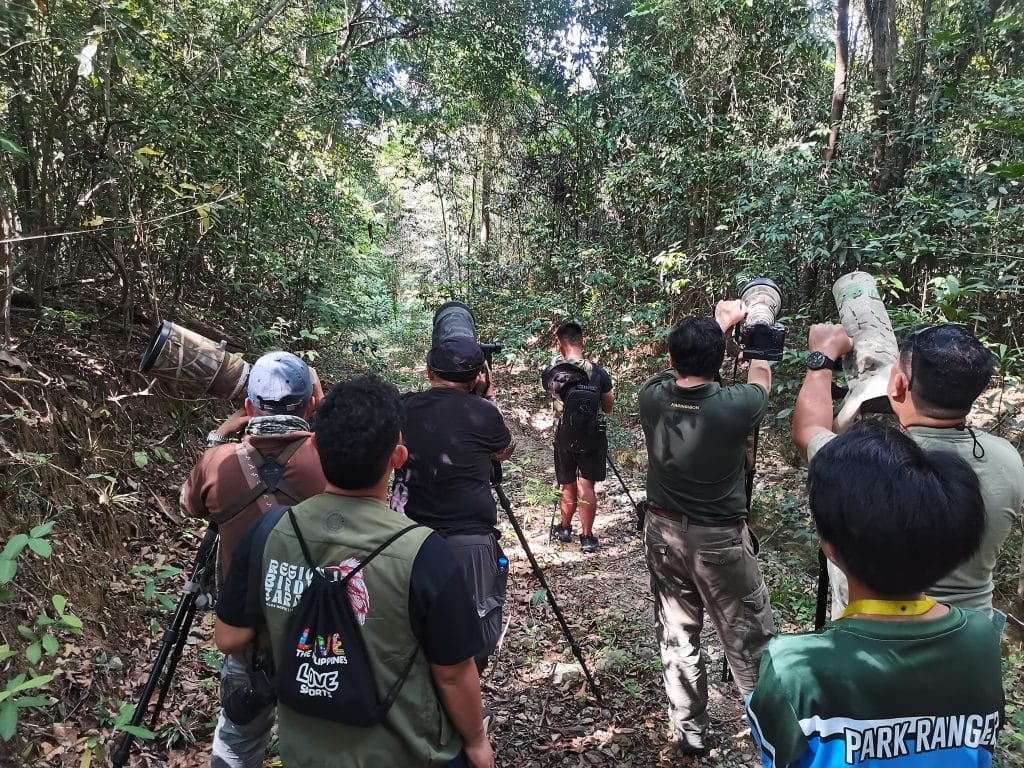
The program included a couple of hours for birdwatching where the participants were able to observe, Luzon Hornbills, Luzon Flamebacks, Philippine Serpent Eagle, and Scale-feathered Malkoha, underlining the region’s rich avifauna. These observations highlighted the biodiversity that thrives in protected landscapes like MSPL and reaffirmed the importance of safeguarding these habitats.
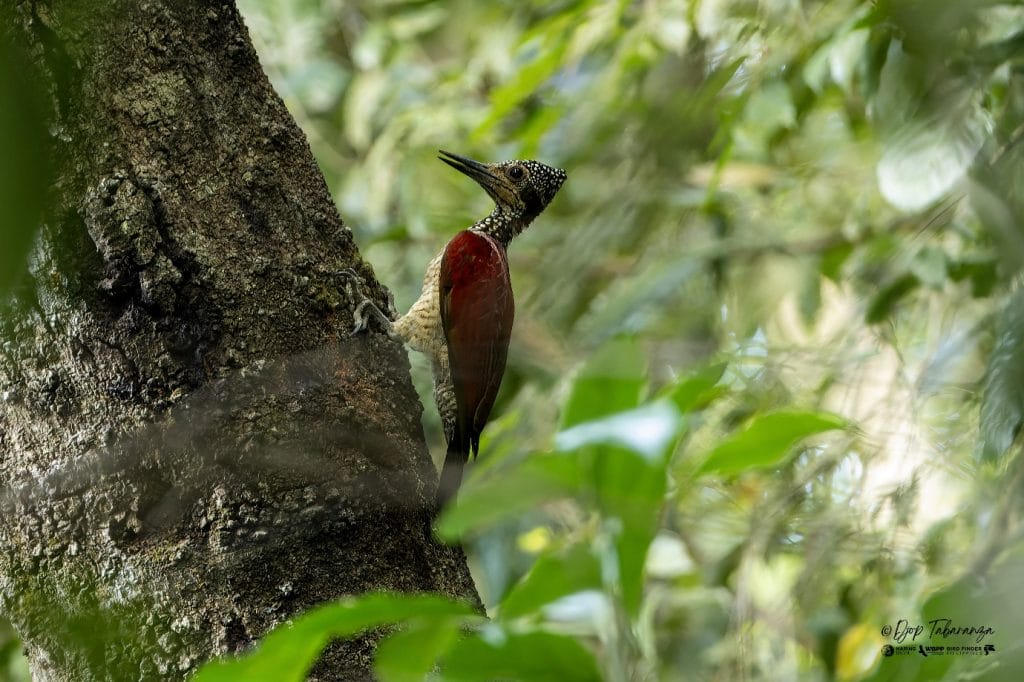
In the evening, the caravan was hosted by Bani’s Municipal Mayor, Facundo O. Palafox Jr., for a night of camaraderie, where participants shared stories from the day’s activities and enjoyed local cuisine that highlighted the town’s rich heritage.
The next day, the caravan moved to the Bangrin Marine Protected Area in Bani, Pangasinan, a known hotspot for coastal and migratory birds. Participants spotted species such as the Philippine Duck, Osprey, Whimbrel and Sandpipers, while learning about the vital role of mangroves, tidal flats, and estuarine systems in supporting birdlife. The area served as an ideal site to promote awareness of marine protected areas and their ecological and tourism value, particularly as critical stopover points for migratory species.
Later that day, the group visited the Bani Communal Forest, a lush woodland reserve that serves as an important habitat for both common and endemic bird species. Accompanied by representatives from the local government unit, and forest wardens, birders trekked through trails and open forest areas, recording sightings and enjoying the natural serenity.

On April 6, the caravan continued to Mt. Balungao Hilltop Adventure and Hot Spring in Balungao, Pangasinan. Known for its geothermal springs and elevated forest environment, the site provided an exciting setting for both daytime and nocturnal birdwatching. Participants explored various trails and lookout points, hoping to spot bird species that inhabit the area such as Philippine Nightjar, Little Grebes, Rufous-crowned Bee-eaters, and Whiskered Treeswifts. The site’s combination of natural beauty and adventure-based tourism—such as ziplining and hot spring bathing—demonstrates how ecotourism can be both educational and economically beneficial. The activity also underscored the value of sustainable tourism initiatives that promote biodiversity appreciation while contributing to local development.
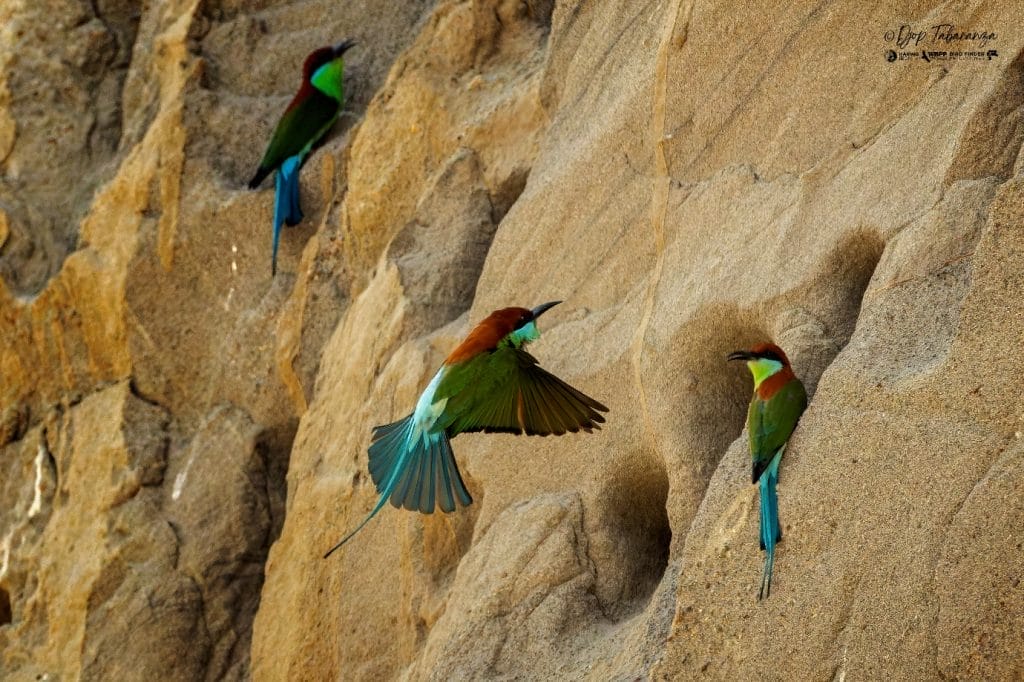
Throughout the caravan, birders, conservationists, students, and local officials shared a common goal: to promote environmental stewardship through the appreciation of birds and their habitats. By showcasing the region’s natural assets—from coastal wetlands and mangroves to forests and highland reserves—the caravan emphasized the interconnectedness of ecosystems and the importance of conserving them for future generations.
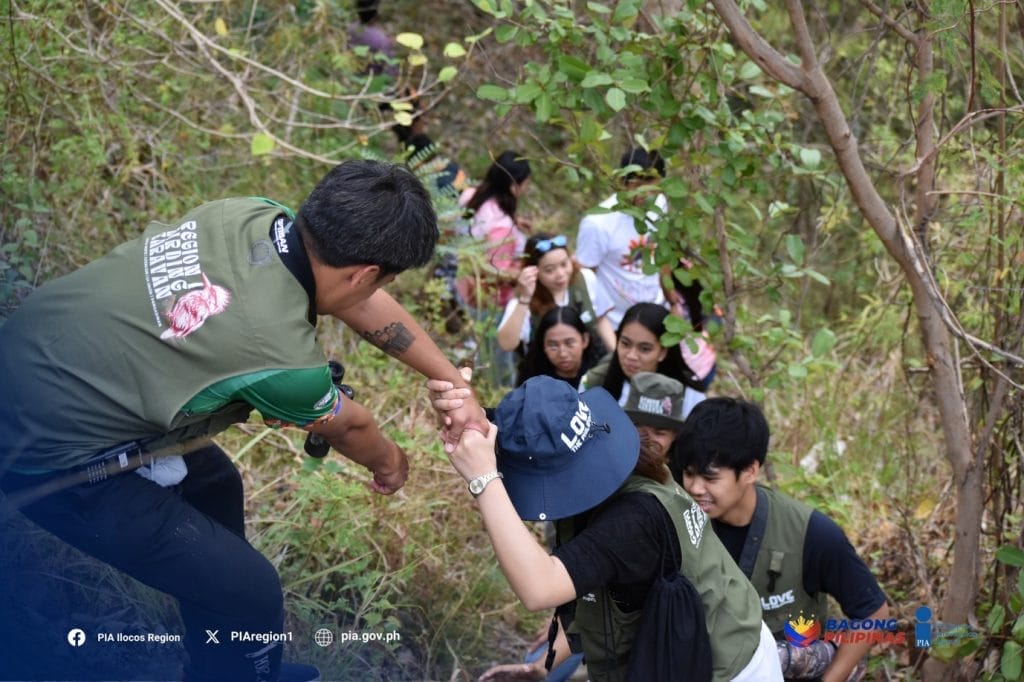
More than just a birdwatching tour, the Region One Birding Caravan served as a platform for habitat conservation advocacy, community engagement, and ecotourism promotion. It brought together a diverse group of individuals and organizations united by a passion for nature and a commitment to preserving the region’s ecological heritage.
LA UNION LEG – A birding haven for migratory birds
By Karl James Gavero
After our morning birding session at Balungao Hilltop Adventure, we headed to the fishponds of Brgy. Raois in Sto. Tomas, La Union to spend the rest of our afternoon. Upon arriving, we were immediately greeted by the sight of numerous birds in flight—flocks of Whiskered Terns gracefully gliding over the water, several egrets soaring elegantly at a distance, and, to our delight, an Osprey actively hunting for fish. It was a spectacular welcome. Although we originally came in hopes of spotting ducks, the sheer variety of birds soaring above us made up for their absence. The place turned out to be a great spot for migratory birds—a quiet, food-rich area where they could rest and feed. Seeing so many different species, gave us hope that the ecosystem here is doing well. It also felt like a good sign that the fishponds are thriving too. After spending time watching the birds go about their day, we left feeling refreshed and excited for whatever the next stop had in store for us.
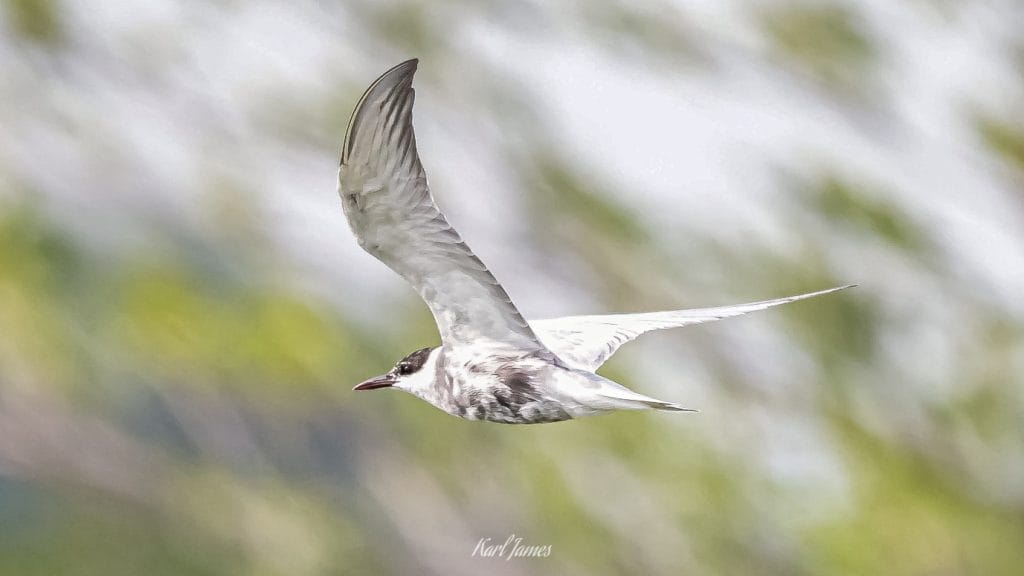
We started the next leg of our birding adventure before dawn, heading to the Agoo-Damortis Protected Landscape and Seascape. The light was soft and golden, ideal for birdwatching, but unfortunately, there weren’t as many birds as we had hoped to see in the main area. Still, nature always finds a way to surprise us. We spotted a Striated Heron quietly stalking its prey near the water’s edge, and several Asian Glossy Starlings flitting about the trees. Wanting to maximize the visit, we explored further toward the beach—and our efforts paid off. There, we saw a good number of wader birds including Wandering Whistling Ducks, Black-winged Stilts, and different species of Plovers feeding along the shore. The day closed with a breathtaking sunset over the beach, a fitting end to a simple but rewarding visit.
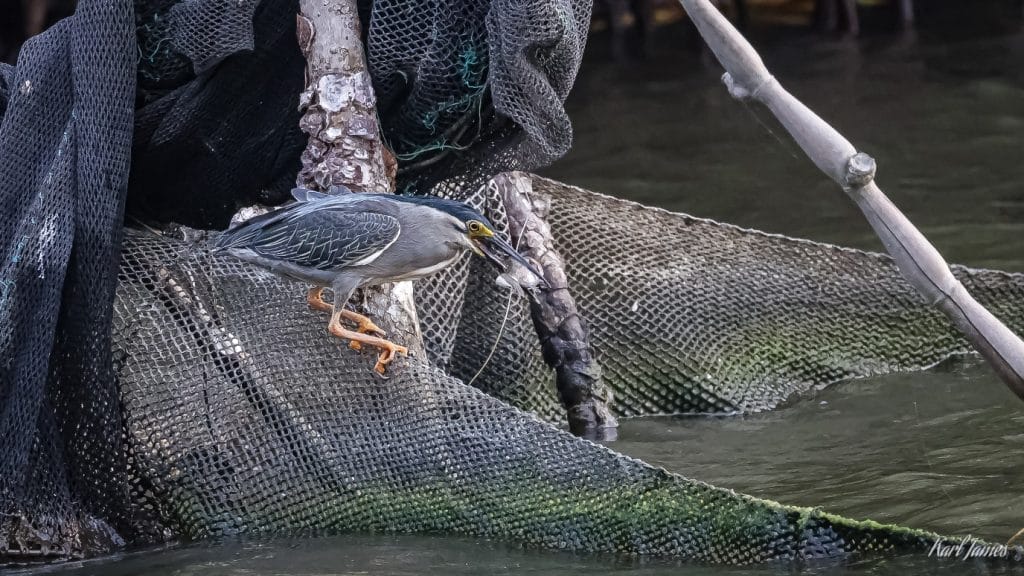
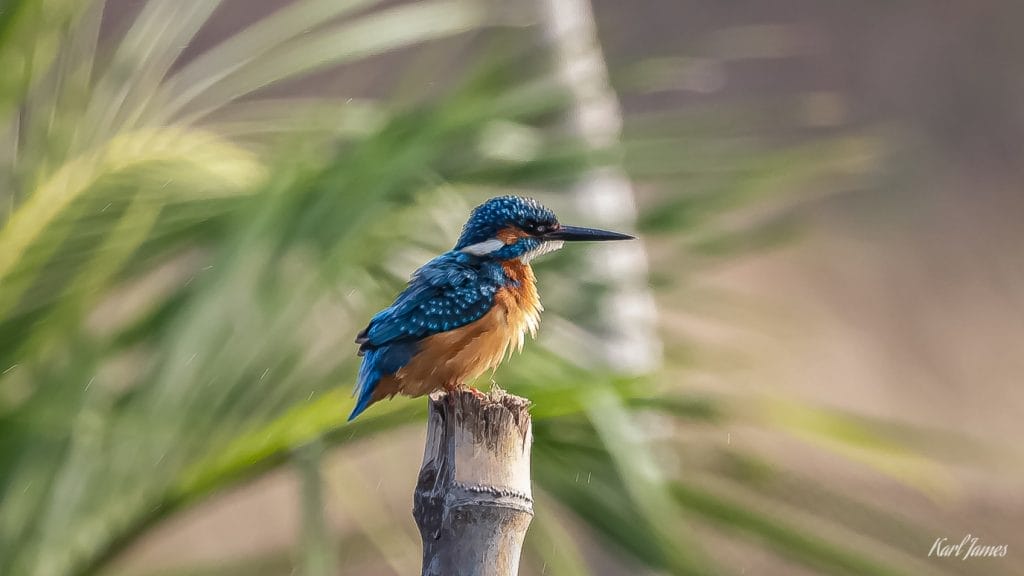
Another day, another chance to explore. We woke up early—well before daybreak and made our way to the Aringay Wetlands and Grasslands. After a 15-minute walk through the trail, we reached the heart of the wetlands, and it didn’t disappoint. The place was alive with bird activity. We spotted raptor/s soaring high above, rails and sandpipers feeding in the marshes, and Black-winged Stilts wading through the shallow waters. A kingfisher darted across the scene, hunting with sharp precision. Grassland birds such as the Striated Grassbird added song to the scenery, creating an atmosphere of natural harmony. It was clear this area supports a rich and diverse ecosystem—one where birds are not just passing through but thriving. The energy of the place, filled with life, made it a memorable birding morning that we won’t forget anytime soon.
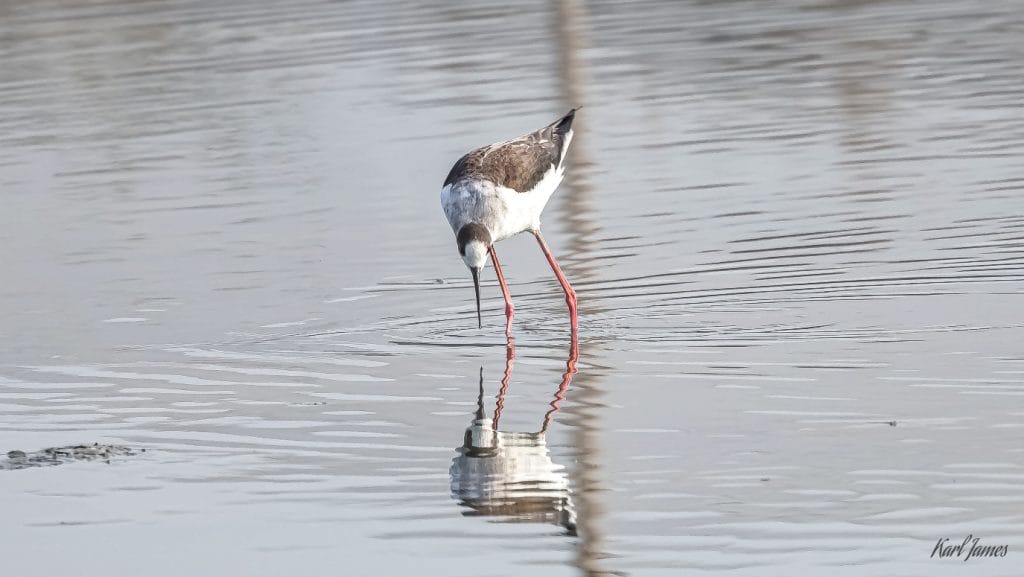
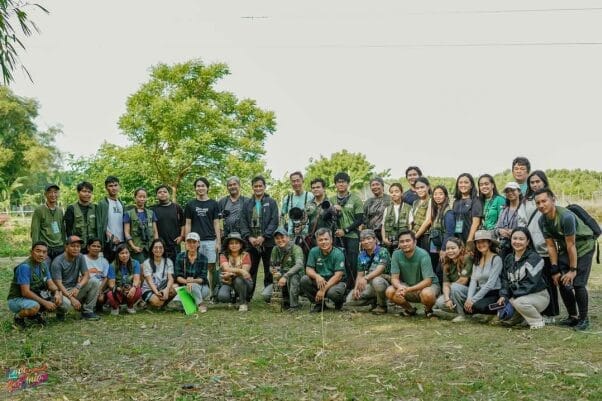
ILOCOS SUR AND ILOCOS NORTE LEG
By Vinz Pascua
After stopping by the Grape farms of La Union, the Region 1 Birding Caravan traversed the MacArthur Highway to reach its next birding destination: Ilocos Sur. And the municipality of Suyo is our first birding destination in the province.
In contrast to the previous sites visited in the province of La Union, Suyo gave us a glimpse of lowland Forest birding. And a “glimpse” is pretty much how we summarize our visit to Suyo. Our birding site was a quaint mountain resort visited by the locals of the area. Its forest cover, although quite towering, is still surrounded by non-native tree species such as the infamous Mahogany. Within the 1-hour timeframe allotted for the Birding Caravan in Ilocos Sur, we documented only 10 species in the area, including notable lowland endemics such as the Coleto, the Balicassiao, and the Brown-breasted Kingfisher. Our sighting of the Coleto and Brown-breasted kingfishers was quite exhilarating, as we saw pairs of the species in a single stationary spot.
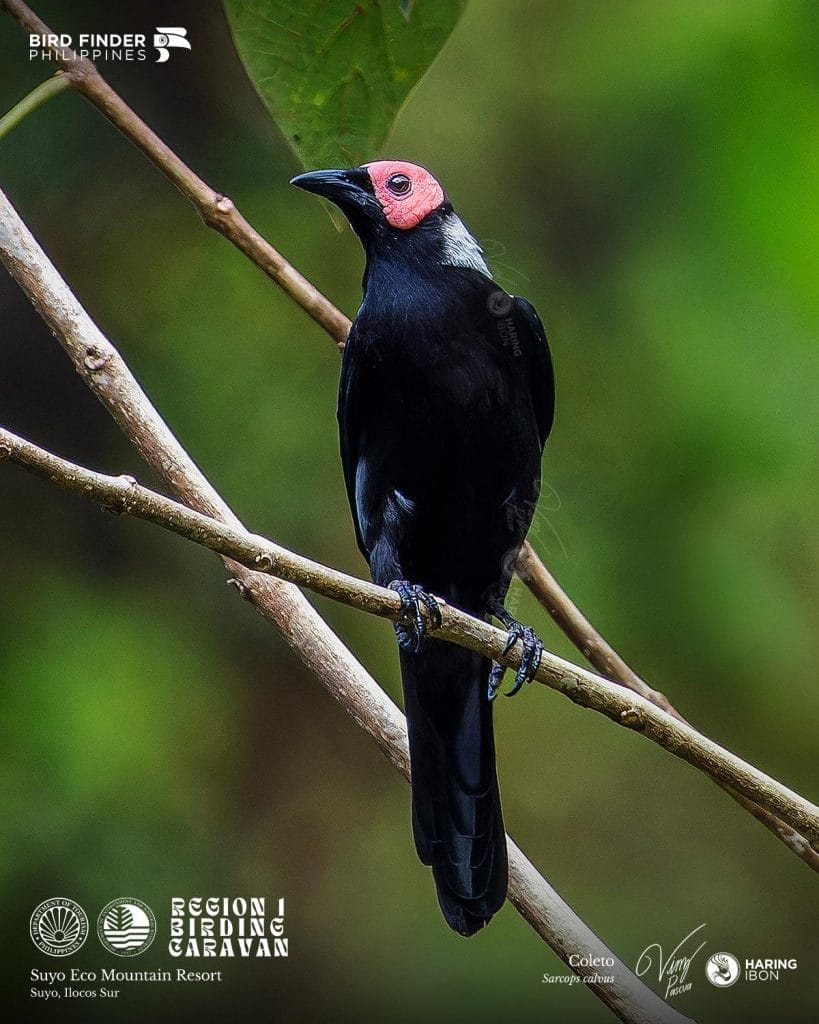
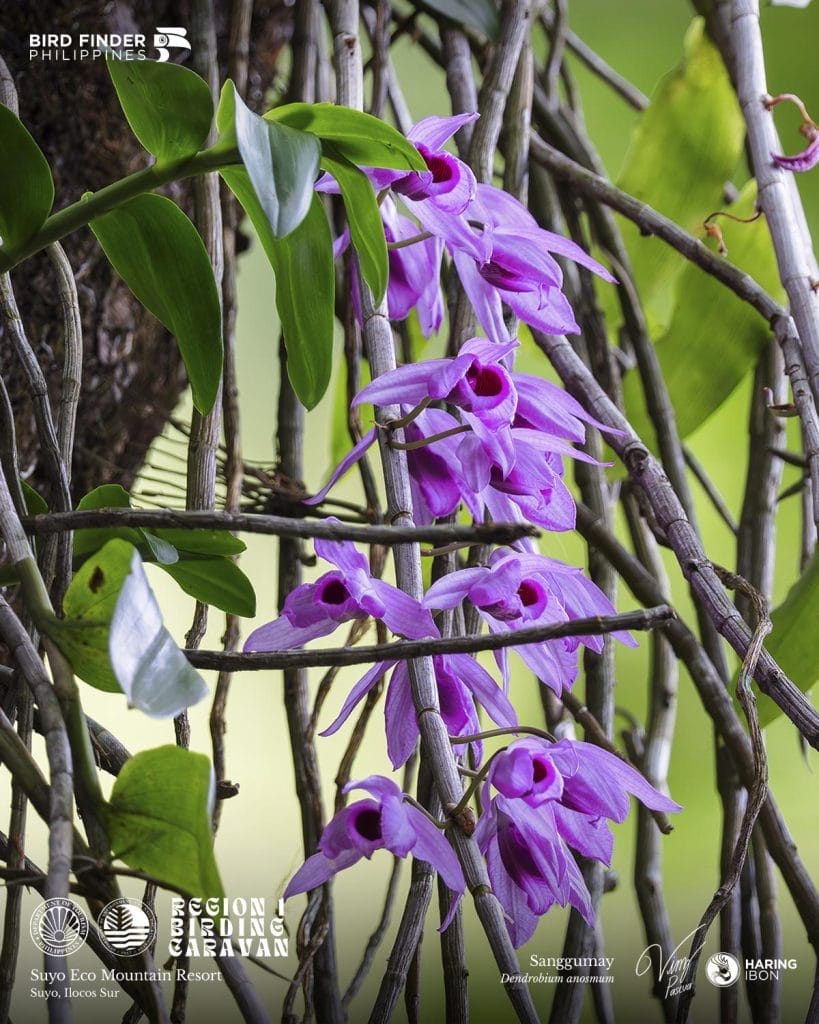
An iconic Philippine forest bird, the Coleto (left) and the gorgeous Sanggumay Orchids, scientifically known as Dedrobium anosmum (right).
One of the most surprising aspects of Suyo was the abundance of Salingogon orchids, a native Philippine plant that blooms with gorgeous purple petals on the larger trees in the area. Although the Eco-mountain resort features some ornamental Salingogon orchids, the larger native trees in the area also have some stunning wild blooms.

Despite being brief, our exposure to lowland forest birds was a welcome one, especially after visiting numerous waterbird sites. This way, we get to see more of the truly unique birds found only in the Philippines. And we are about to encounter a whole lot more endemic birds once we reach the municipality of Cervantes. The Birding Caravan stopped when we reached the Tagudin-Sabangan View Deck, allowing participants to embark on a short photo session amidst the mountains of Bessang Pass Natural Park. Admittedly, the view is stunning, and it was a worthwhile pit stop before we headed up to Cervantes.
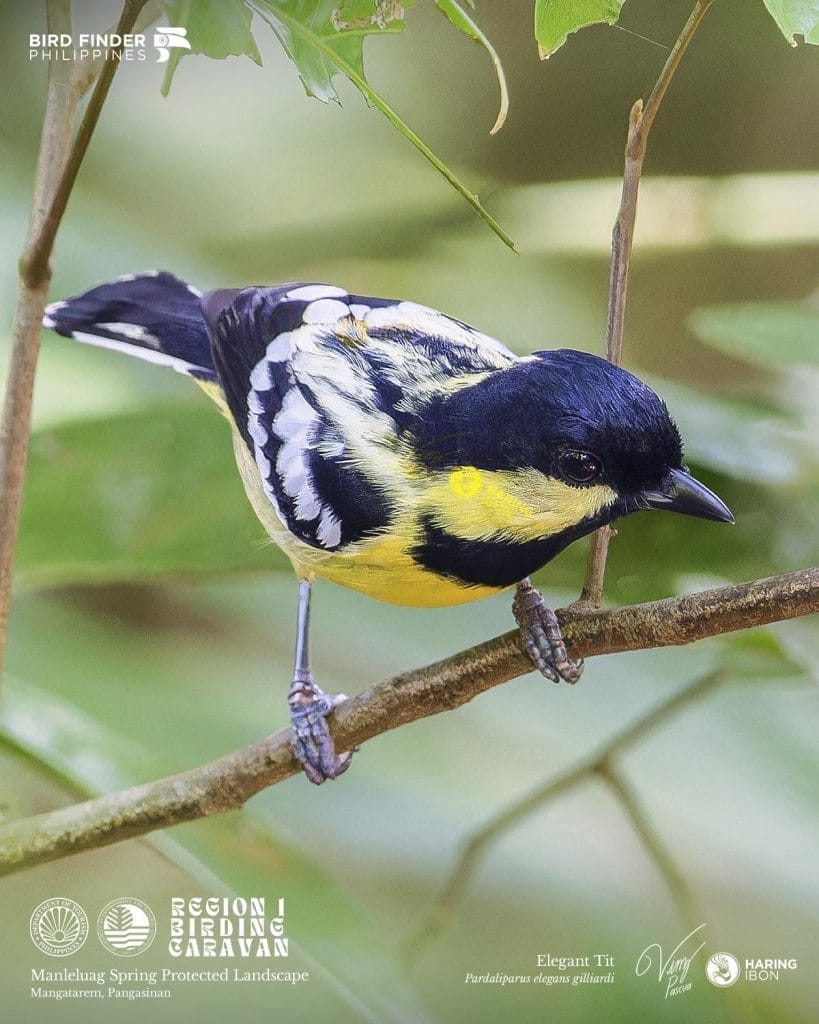

Two subspecies of Elegant Tits were seen during the Region 1 Birding Caravan: the gilliardi subspecies spotted in Manleluag Spring Protected Landscape (Left), and the montigenus subspecies spotted in the Tagudin-Sabangan View Deck (Right).
Although we didn’t do extensive birding in Tagudin–Sabangan, Djop and I got curious about the few trees in the area, and we walked around the road for a few minutes to see what this pit stop could offer. At around 800 meters above sea level, there will surely be some birds present. Two species for the trip still count for our birding caravan list, with a Trilling Tailorbird and an Elegant Tit. As someone who keeps track of photographing subspecies, yes, we did spot two subspecies of Elegant Tits during the Birding Caravan: the gilliardi subspecies, found in the Pangasinan-Bataan peninsula (which we observed in Manleluag), and the montigenus subspecies, found in the Cordilleras.
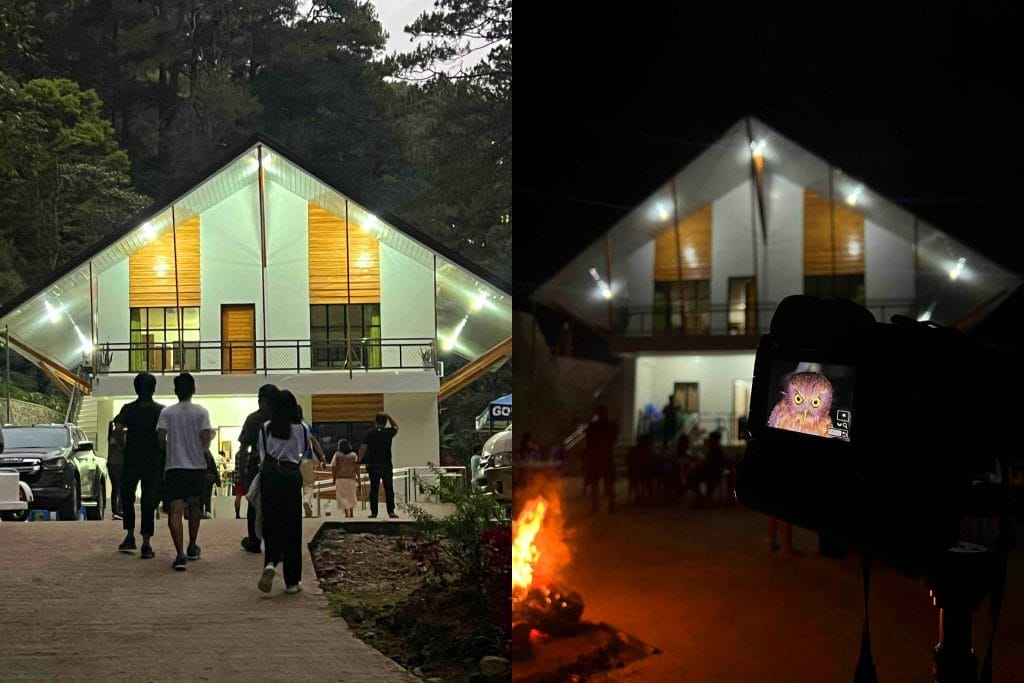
After a long, dizzying hour-long drive, the Birding Caravan has finally reached Cervantes. If I were to summarize our experience in Cervantes, it was the highlight of our overall Birding Caravan trip. On the night of our arrival, we were greeted with an Igorot welcoming ceremony with feasts and dances that everyone enjoyed. Experiences like joining the dances and exploring Igorot cuisine make the Region 1 Birding Caravan a heartwarming experience in the Philippines. I believe this experience of engaging with the country’s culture needs to be nurtured in other areas of the Philippines to make the Philippine bird tourism scene one that stands out from its regional peers and respects the land it is on.
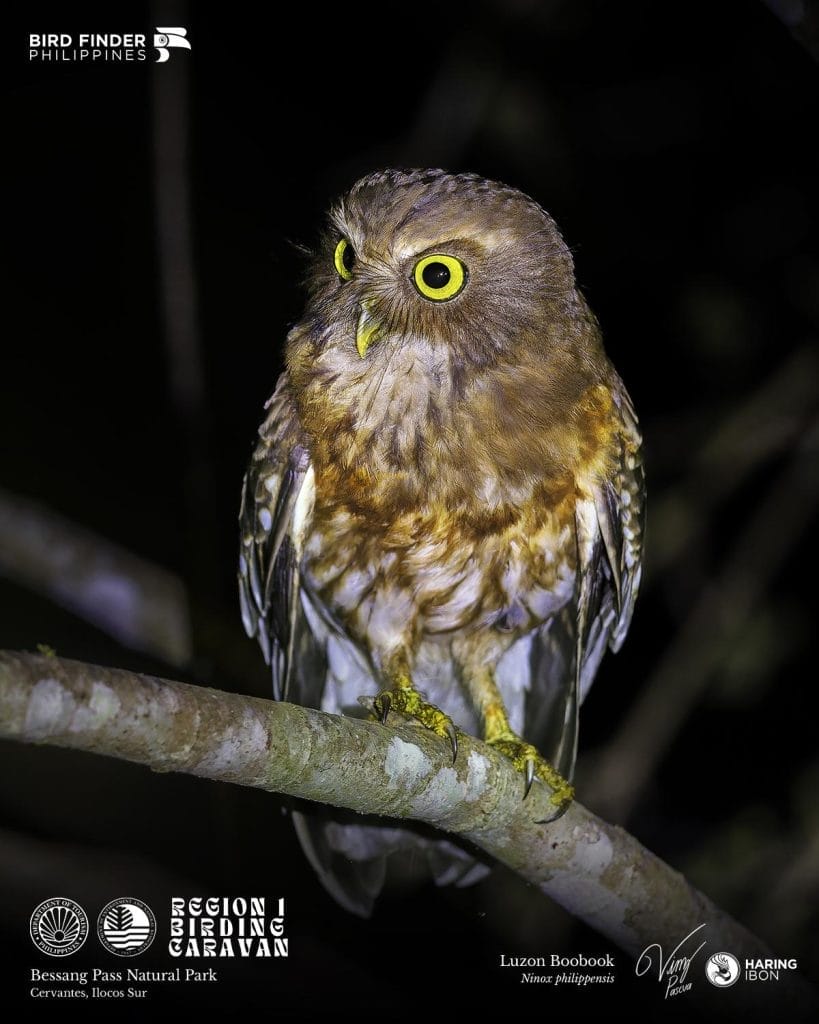
In the middle of our dinner with the Birding Caravan participants, several keen-eared birders heard the faint call of a Luzon Boobook within Maggon. The Luzon Boobook is the first and only Owl species seen and recorded during the Birding Caravan. This species was one of our biggest highlights due to its proximity to the participants of the Birding Caravan. This particular individual stayed for a while after we called it to our perch, which allowed several participants of the Caravan to get some great photos of the Luzon Boobook.
Our accommodation at Cervantes was comfortable, albeit at the very end of the spectrum of accommodations we have visited throughout the Birding Caravan. The weather throughout the night was one I am accustomed to, having stayed in Sydney for three years, with temperatures below 20 degrees. However, the rather cold weather was quite a difficult one to adjust to with some of our participants. I recall fellow WBPP member Joey Alfante shivering outside our accommodation as he stayed up late working on the pagodas (the only area of our accommodation with signal).
The morning was quite different in terms of weather conditions expected at our elevation. Our birding site was situated at an elevation of around 1,500 meters above sea level, and the initial expectation was that the chilly evening would continue into the morning. Ironically, the sun was certainly present during the morning, as we experienced regular hot 27-degree weather across Bessang Pass.


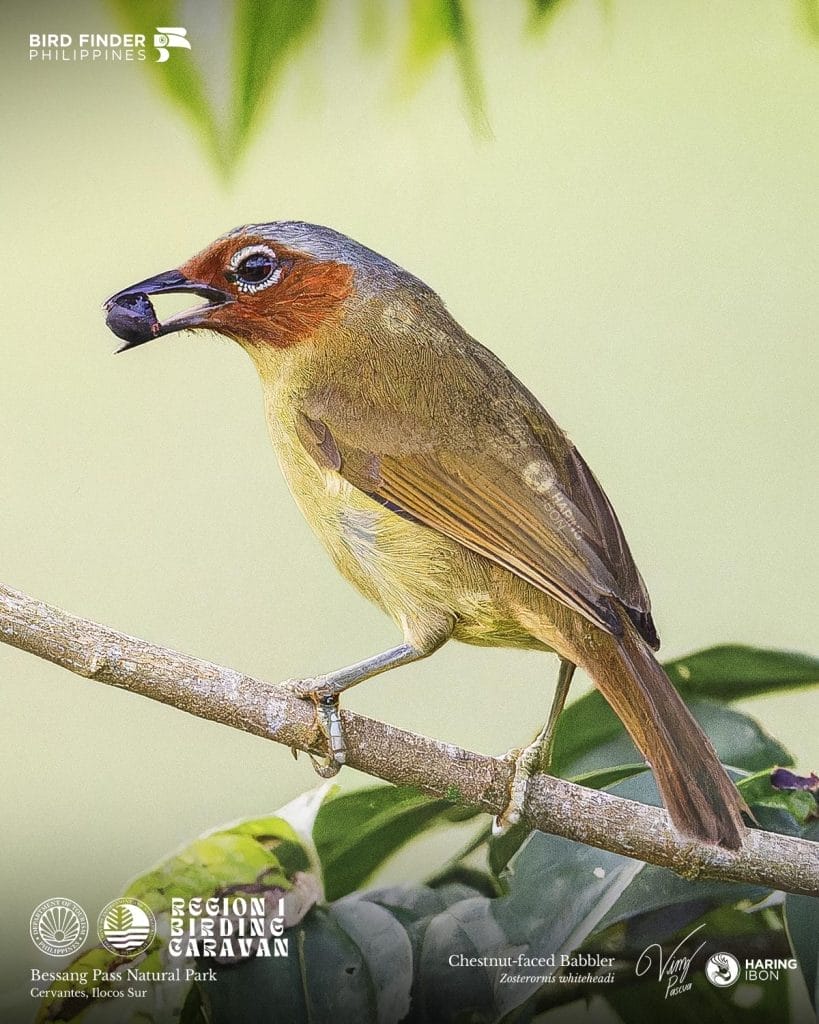
The Northern Luzon benguetensis subspecies of Negros Leaf-warbler (left) and the Chestnut-faced Babbler (right), two species frequently seen in the mixed-flocks of Bessang Pass, Ilocos Sur.
Before we started fully birding across Bessang Pass, we were split into two groups. The first group (Ivan, PIA, DENR, and DOT) walked a lower-elevation roadside trail through the Pine forests of the site, while our group (WBCP, WBPP, and Bird Finder Philippines) followed a higher-elevation trail across the mossy montane forests. The distinction between the two forest types was very evident after our birding session with Ivan’s group spotting the Red Crossbill and our group having a plethora of montane bird species in our montane mossy forest. When we compare all the other sites of the Region 1 Birding Caravan, Bessang Pass houses the most number of Philippine (specifically Luzon) endemic birds across our trip. A brief glimpse of the Scale-feathered Malkoha teased us on our way up the trails, but the sighting of a highland Luzon mixed-flock invited our group to stay and watch by a patch of small trees with flowering Medinilla plants and Amyema benguetensis mistletoes. Some highland Luzon mixed-flock birds that we spotted include the Fire-throated Flowerpecker, Pygmy Flowerpecker, Buzzing Flowerpecker, Negros Leaf-warbler, Green-backed Whistler, Warbling White-eye, Chestnut-faced Babbler, Blue-headed Fantail, and Elegant Tit. Our group also spotted a wandering Luzon Island Thrush, one of the many new splits from the past few years, foraging for food along the trail.
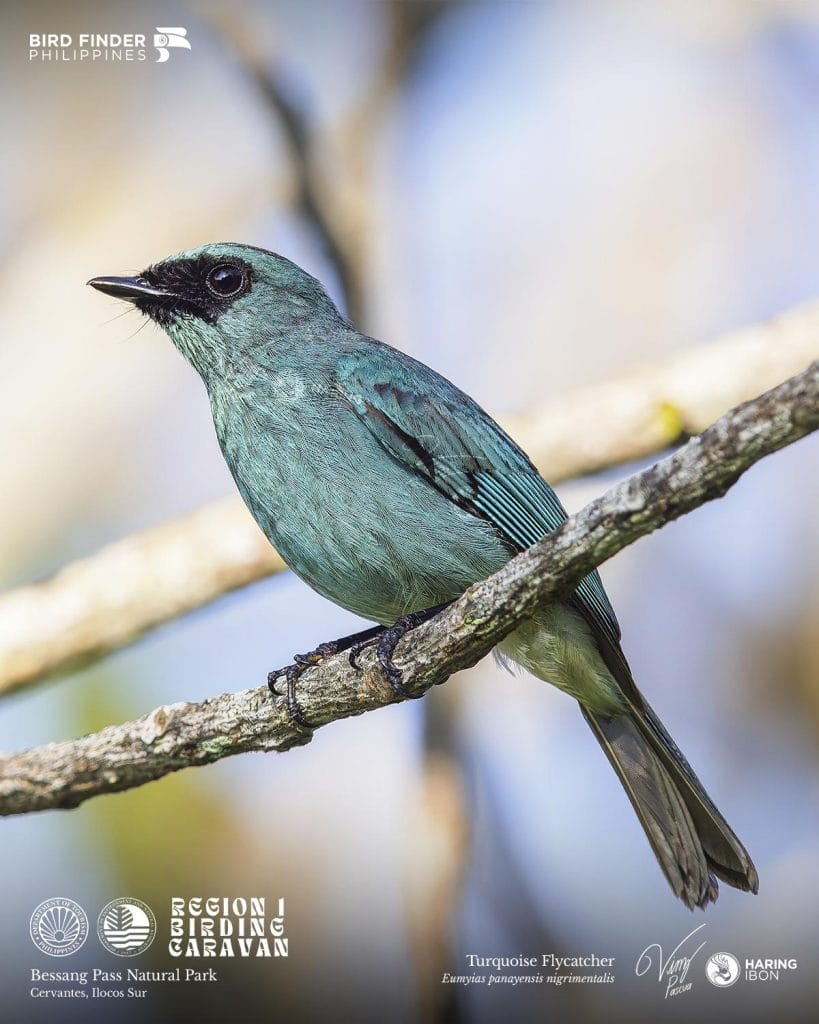
One of our highlights was a very close encounter with a Turquoise Flycatcher! We encountered several Turquoise Flycatchers in Bessang Pass, but these individuals got incredibly close to the participants, providing birders with a memorable photo experience of this species.
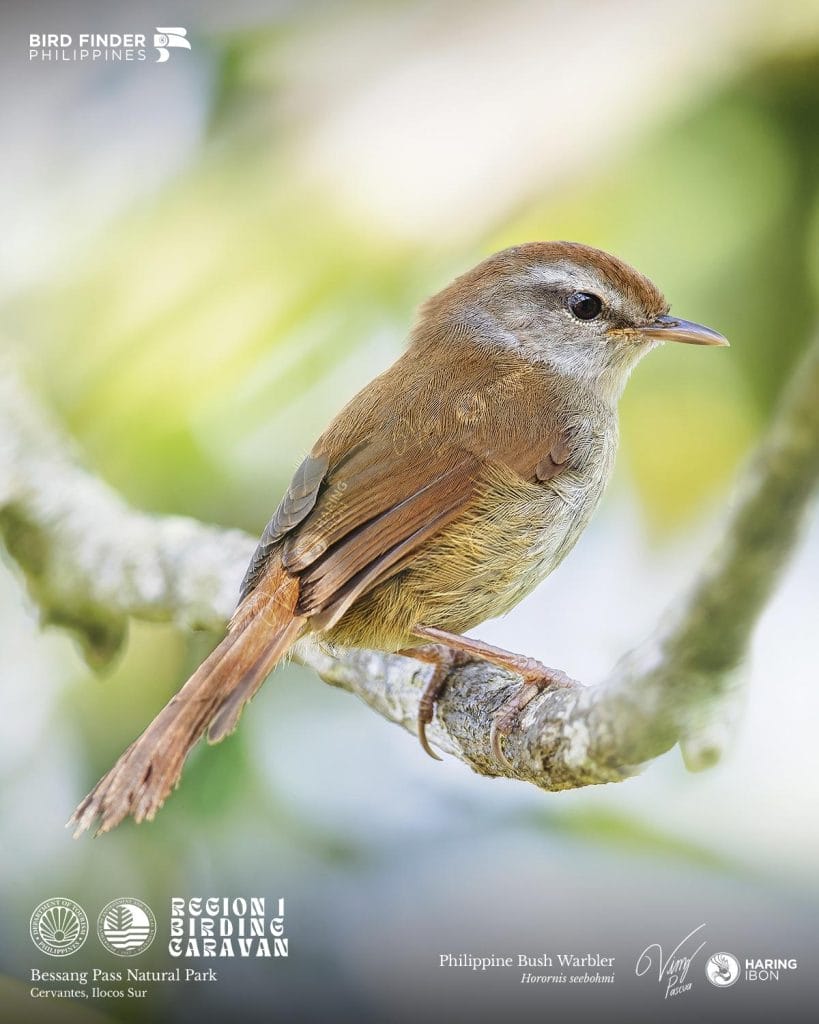
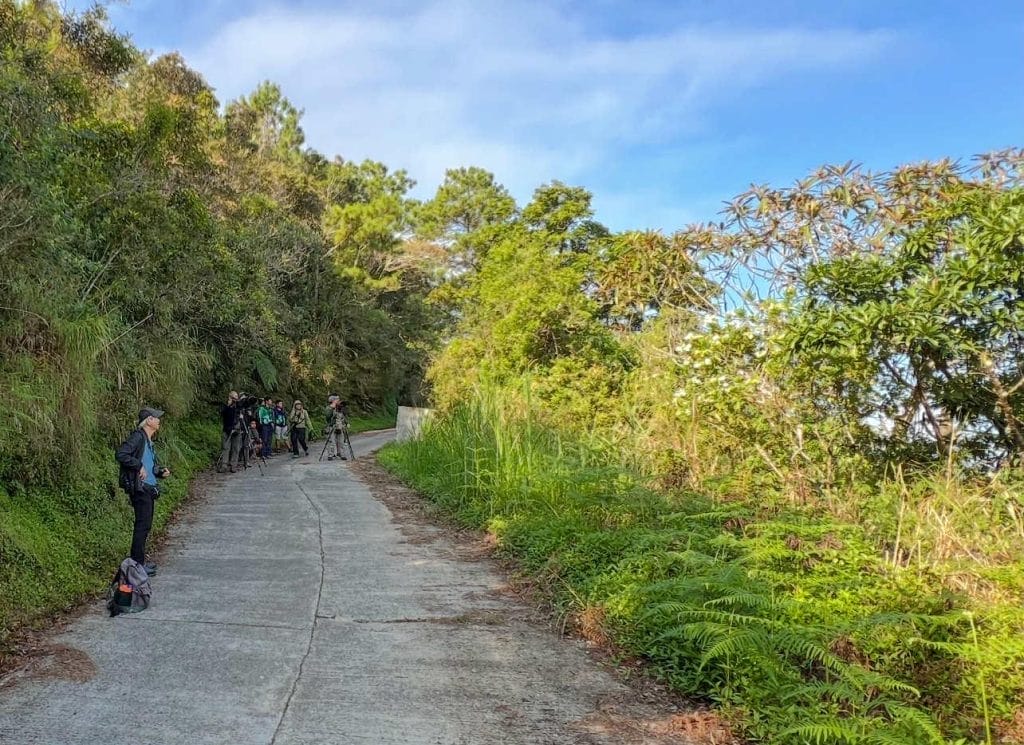
One of my favorite birds of the trip, the Philippine Bush Warbler (left) and the birding condition in Bessang Pass (right). We see WBCP member Richard Ruiz closer to my side of the trail getting clear views of the Philippine Bush Warbler with other Birding Caravan participants in the background (getting obstructed grassy views).
Another highlight species, which provided the opposite of a memorable photo experience, was the notorious Luzon-endemic Philippine Bush Warbler. My first encounter with this bird was during my 2022 hike on Mount Polis, and it was indeed a frustrating bird back then. Oddly enough, this species was quite a delight (for me) during the Birding Caravan. With absolute certainty, I can say that the Philippine Bush Warbler was a delight for me and fellow WBCP member Sir Richard Ruiz because we were standing on the correct side where we could see the Philippine Bush Warbler perch openly in front of us. We had the light behind us and an unobstructed view as the Philippine Bush Warbler perched on a tree. On the opposite side, where we could find the rest of the WBCP, DENR, and DOT participants, they had a much tougher time with the Philippine Bush Warbler, as they were facing the light with a lot of grass blocking their foreground.


A male Luzon Metallic-winged Sunbird (left) and a female Luzon Metallic-winged Sunbird perched beside the endemic Amyema benguetensis (right).
A notable observation we made was of Luzon Metallic-winged Sunbirds feeding on the endemic mistletoe, Amyema benguetensis. My last observation of the Luzon Metallic-winged Sunbird was of a female individual feeding on another endemic Philippine plant, Dendrobium serratilabium, during our visit to Infanta. Speaking of which, the addition of numerous native plant sightings across Bessang Pass was a delightful compliment to the Birding Caravan.

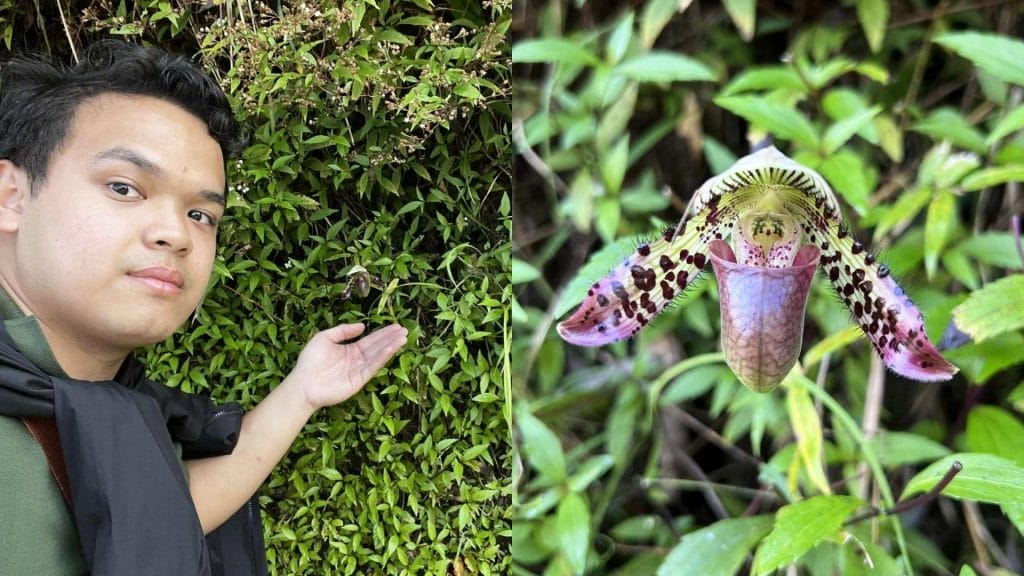
Luzon endemic flora encountered in Bessang Pass: the one on the top is Strongylodon zschokkei, a species of Jewel Vine, and the one on the bottom is Paphiopedilum argus, a Slipper Orchid.
While we were photographing the Philippine Bush Warbler, I took a quick selfie with a Luzon-endemic slipper orchid, Paphiopedilum argus, marking my first encounter with a wild slipper orchid in the field. However, my favorite plant encounter in Bessang Pass is with my first-ever Jewel Vine, Strongylodon zschokkei, a rarely photographed Luzon endemic vine. It is related to the iconic Strongylodon macrobotrys (Jade Vine) and the newly described yet similarly colored Strongylodon juangonzalezii (JC’s Vine), although not as famous. And, for a first-time Jewel Vine encounter, I feel a sense of pride having seen a species that is very rarely photographed be my first Jewel Vine! All these plants were identified with the immense help and expertise of Dr. Michael Agbayani Calaramo, one of the key figures in making this entire Region 1 Birding Caravan a reality. He has also discovered a Begonia species endemic to the Bessang Pass area, Begonia bessangpassensis, but we weren’t able to spot this particular Begonia during the trip. Our sighting of Strongylodon zschokkei served as our parting gift from Ilocos Sur as we headed back to our base at the Bessang Pass Natural Monument.
Ending our Ilocos Sur journey on a high note, we then proceeded to travel back down to the lowlands to reach Ilocos Norte. Admittedly, the 7-hour travel period from Cervantes, Ilocos Sur, to Paoay, Ilocos Norte, was quite grueling, particularly with our descent along numerous zigzag roads. Luckily, Bonamine from Tita Jo Floresca was there to keep my innards intact for me to make it through the rest of the journey. As usual, after taking Bonamine, I had no idea how those roads went, and I simply woke up when we arrived at Paoay Lake.

The highlight of our Paoay Lake visit was a plethora of Philippine Ducks. We counted around 75 individuals gathered at the center of Paoay Lake. We relocated to a different spot of the lake after our first hour, but our view was the same, with the flock being distant that a 1200mm setup can only muster up docu-shots for the moment. Several Intermediate and Medium Egrets thrilled the younger participants as many of them soared overhead, and we were delighted when Brahminy Kites appeared, casting gorgeous lighting across our viewpoint. What we were secretly hoping to see at Paoay Lake was the Great Cormorant, of which the lake is the only reliable site in Luzon to spot this rather rare species. It is common in other parts of the world, such as Australia, but it is much rarer in the Philippines. Unfortunately, it seems the timing wasn’t on our side, but perhaps a visit in a much earlier month, like January or February, would be easier for intrepid birders.
We stayed in Laoag City for the night, and our schedule called for us to wake up at 2:00 AM to reach our birding site by around 5:00 AM. When it comes to Ilocos Norte, the mother of all birding sites in the Ilocos Region is the famous municipality of Adams. This municipality is historically the go-to site to see the Northern Rufous Hornbill up close, but it isn’t the site that the Birding Caravan is destined for. Unfortunately, it is too far, and the schedule is too tight to extend to Adams, especially with guests and government officials awaiting our return at Northwestern University. For Ilocos Norte, our main forest birding site is Kalbario-Patapat Natural Park, which features a notable patch of mossy forests situated around 400 meters above sea level. As someone who has not visited Adams, I can’t directly compare Kalbario-Patapat to the southern municipality of Adams. However, I was quite impressed with the gigantic trees found in the area. The early morning sight of huge mossy trees adorned with epiphytes, just before sunrise, got me quite excited to see what this site had to offer.


One of the thirty kettling Grey-faced Buzzards we spotted in Kalbario-Patapat Natural Park (Left). Birding Caravan participants spotting Buzzards in Kalbario-Patapat Natural Park.
Right as we arrived, an early highlight for Ilocos Norte was the presence of kettling migrant Grey-faced Buzzards. We have a rough estimate of 30 individuals flying over the mountains during the first hour of our stay. We also saw a Crested Honey Buzzard in the middle of this kettling flock. Birding in Kalbario-Patapat was rather hot and dry, in contrast to the abundant plant life surrounding it. The seasons play a big part in the presence of birds in the forest, and the Philippine Dry Season setting doesn’t offer as much as the slightly wetter months of September to November.

Nonetheless, the highlight bird of Kalbario-Patapat, the Northern Rufous Hornbills, made their long-awaited appearance. Everyone rejoiced at the sight of the majestic Kalaws in the final birding site of the Birding Caravan. Although the Kalaws were quite distant, I was able to manage a decent photo from my 1200mm setup. Even if it is far away, the Kalaw remains as majestic as ever, and it will always be a bird that I hope to get a much closer picture of soon.
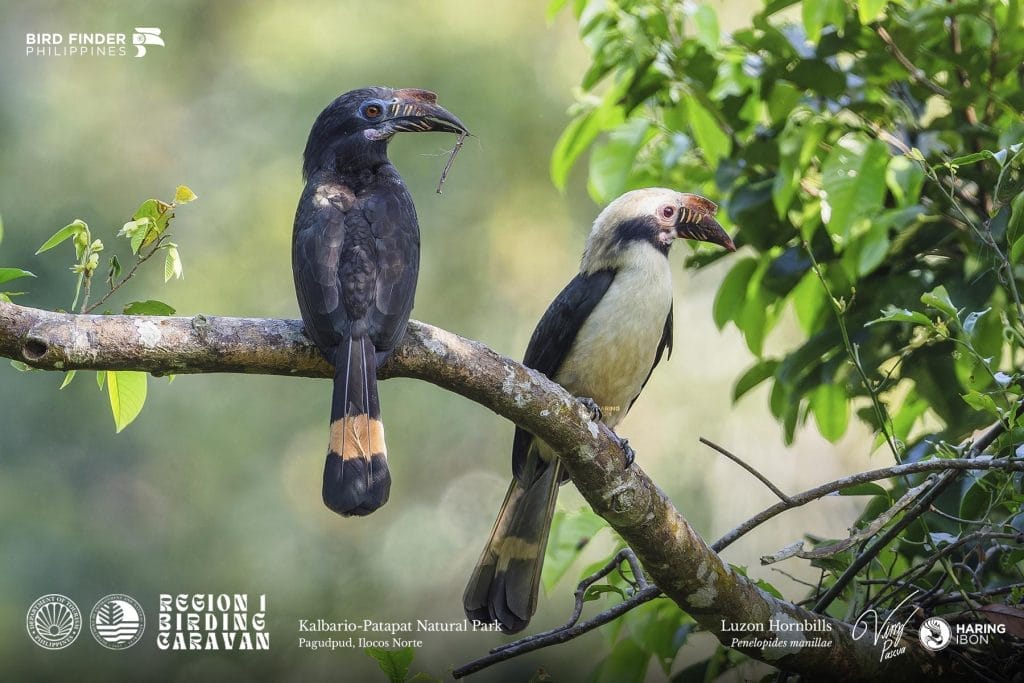
Despite the big Kalaws being quite far, the small Tariktiks gave us very stunning views up close! We recorded a male and female Luzon Hornbill perched on a large tree, with the male delivering and feeding a stick insect to the female. I find the contrast amusing, given that our two Hornbill encounters happened moments after each other in two drastically different shooting conditions. The Kalaw is 100 meters away, and the Tariktiks are 10 meters away! With 2/2 of all Luzon Island hornbills in our bird list, this encounter marked the end of the Region 1 Birding Caravan.
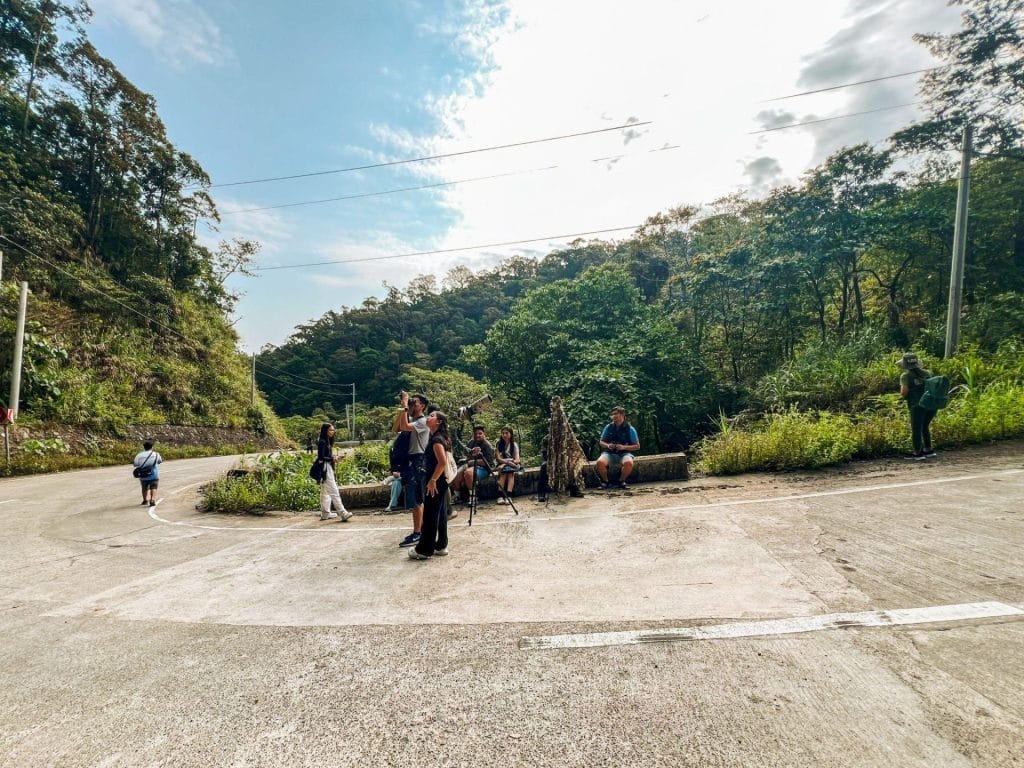
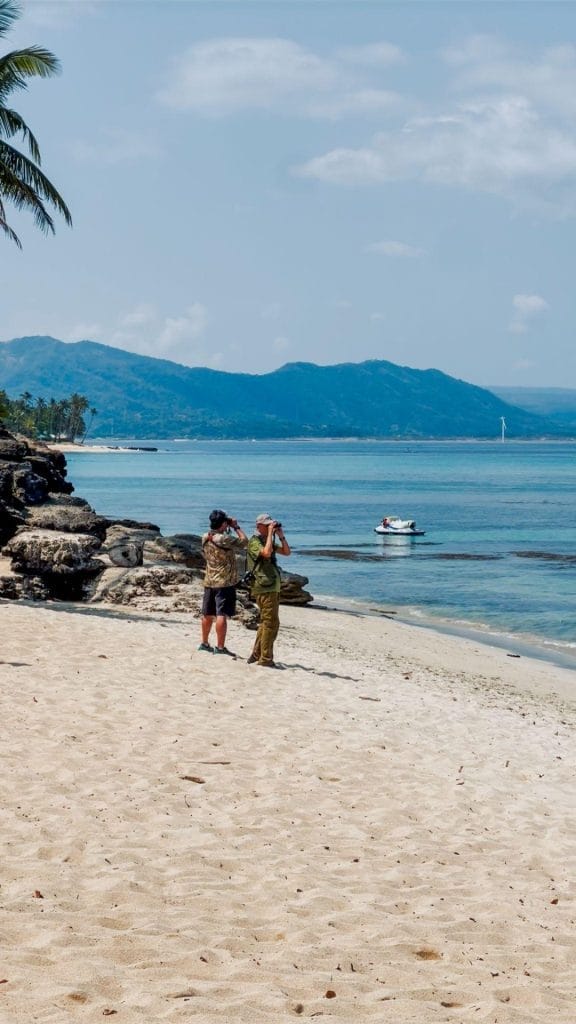

Roadside birding over at Kalbario-Patapat Natural park (Left). WBCP President Mike Lu and Balete Conservancy representative Ivan Sarenas spotting Philippine Ducks at Saud Beach (Center). Buko, Kamoteque, and Bananaque for the Birding Caravan participants at Saud Beach (Right).
On the way back, our group stopped by the Patapat Viaduct to get some cool drone shots for the same-day edit. I got quick photos of Grey-rumped Swiftlets while the participants were taking bridge photos. And we visited the incredibly pristine Saud Beach for some Bananacue and Buko. Saud is incredibly breathtaking, boasting a white sand beach and very clear waters; a stunning beach from Luzon, highly recommended, especially if you want a peaceful beach experience outside of other popular Philippine beaches.
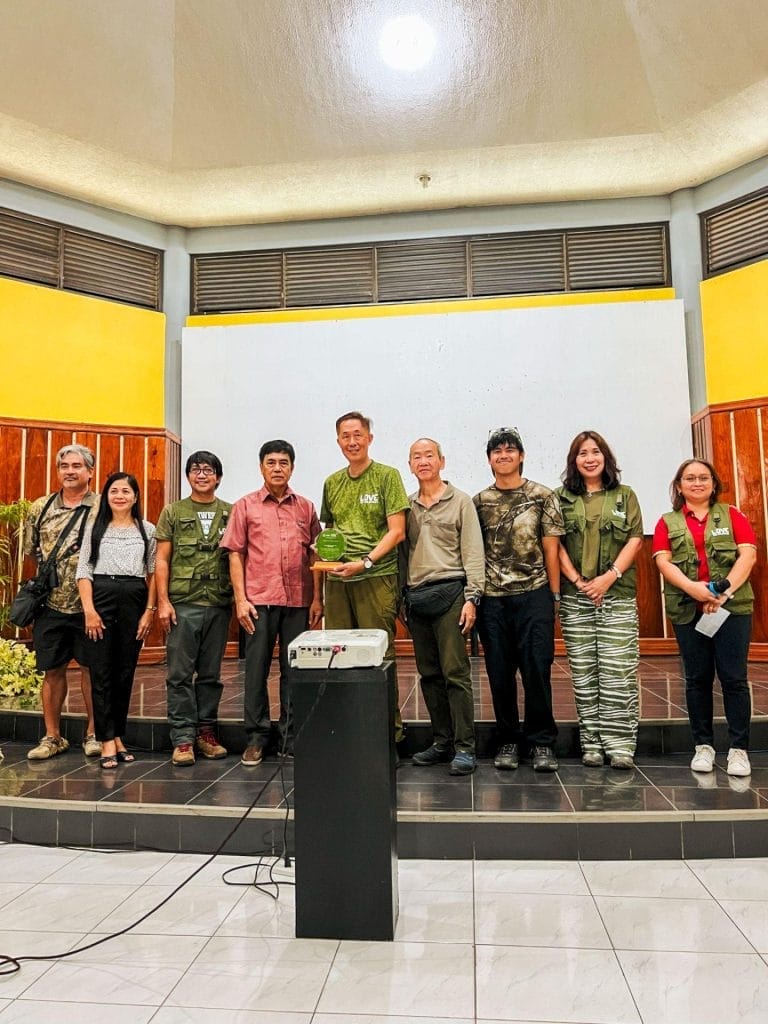

Region 1 Birding Caravan closing ceremony held at Northwestern University.
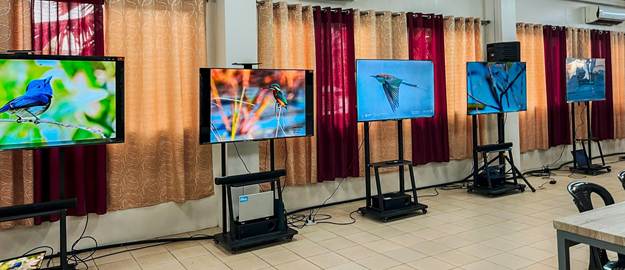
Photographs taken by the participants of the Region 1 Birding Caravan on digital display in Northwestern University.
We concluded the Region 1 Birding Caravan at Northwestern University in Laoag City, closing the Event with a ceremony attended by officials from the Department of Tourism and the DENR. A mini photo exhibition was held to showcase the bird photographs taken during the Region 1 Birding Caravan to the representatives of DENR and DOT.
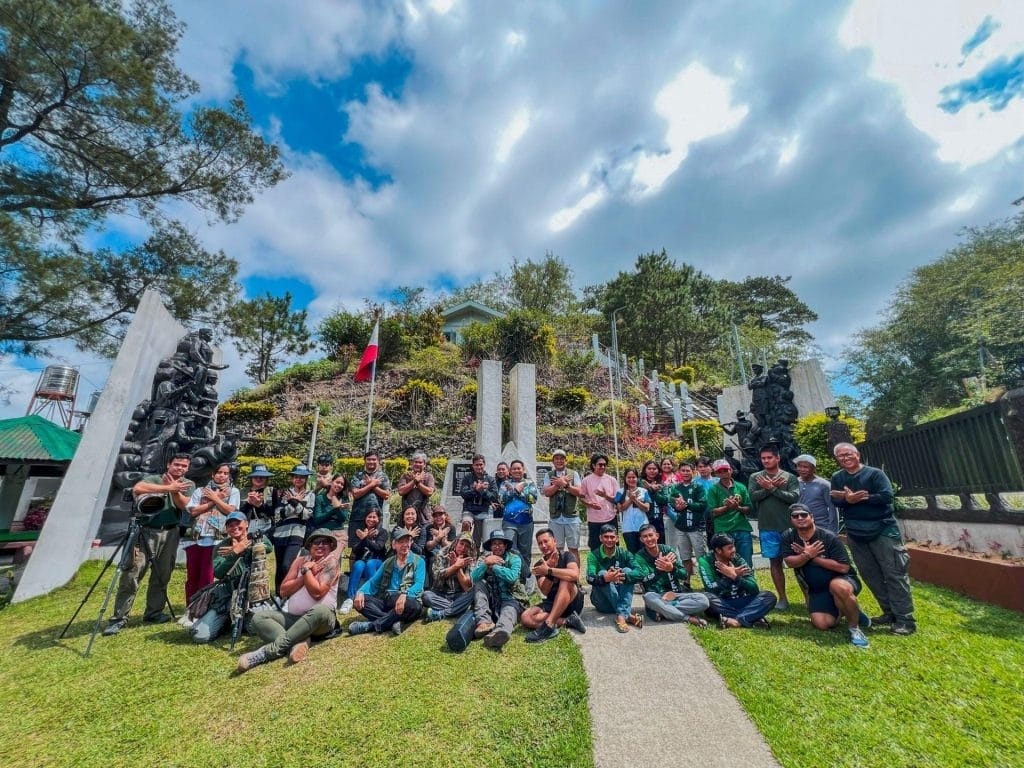
Although Region 1 still has a long way to go to solidify birdwatching tourism, the drive to make it happen has already started, and the model to make it happen will only drive further competition and innovation across all parts of the Philippines, especially when it comes to showcasing the natural specialties of a region. We are fervently optimistic on the birding tourism scene as we slowly embrace Philippine wildlife in our everyday lives. It is our hope to see it grow into a sustainable form of tourism that will help conservation and protection of our native environment. We can’t wait to see what unfolds for birding tourism in the Philippines.
